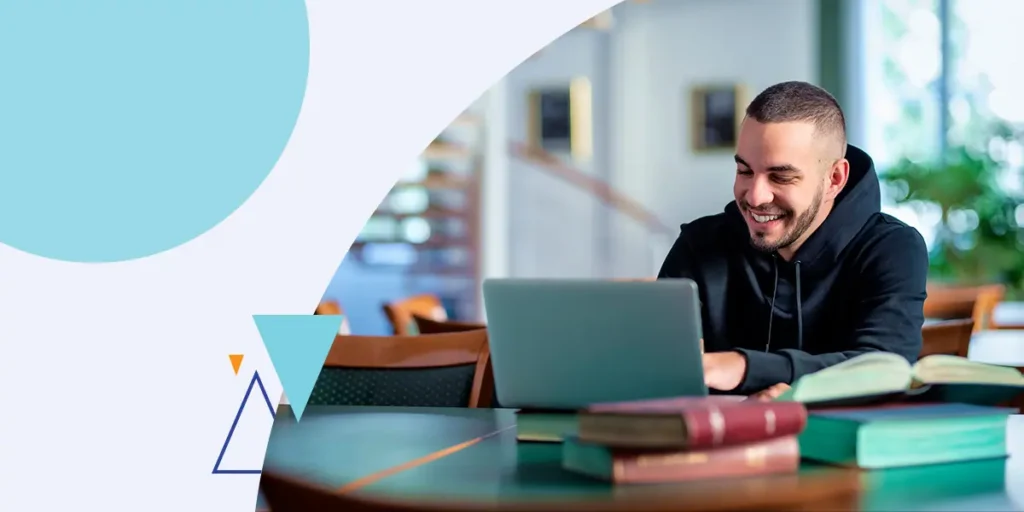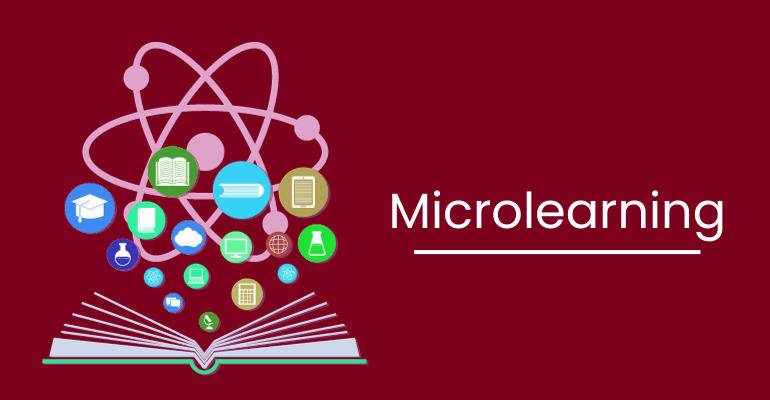Personalized Learning Pathways in EdTech: Your FAQs Answered for 2025

Note: This blog post was updated on March 17, 2025, to reflect the latest trends and advancements in educational technology. In the ever-evolving world of educational technology (EdTech), personalized learning pathways have emerged as a game-changer. As we move further into 2025, the demand for tailored educational experiences continues to grow, driven by advancements in AI, data analytics, and adaptive learning systems. This FAQ-style blog post dives into the critical aspects of personalized learning pathways, their benefits, and how they are shaping the future of education. What Are Personalized Learning Pathways? Personalized learning pathways refer to customized educational journeys designed to meet the unique needs, strengths, and goals of individual learners. Unlike traditional one-size-fits-all approaches, these pathways leverage data-driven insights and adaptive technologies to create a more engaging and effective learning experience. In 2025, personalized learning pathways are powered by sophisticated algorithms that analyze student performance, preferences, and learning styles. This allows educators to deliver content that is not only relevant but also optimized for each learner’s pace and comprehension level. Why Are Personalized Learning Pathways Important in 2025? The importance of personalized learning pathways in 2025 cannot be overstated. Here’s why: Enhanced Student Engagement: By tailoring content to individual interests and abilities, learners are more likely to stay motivated and engaged. Improved Learning Outcomes: Customized pathways ensure that students grasp concepts thoroughly before moving on, reducing knowledge gaps. Efficiency: Learners can progress at their own pace, avoiding the frustration of being held back or rushed. Data-Driven Insights: Educators gain valuable insights into student performance, enabling them to provide targeted support. According to a recent report by EdTech Digest, schools and institutions adopting personalized learning pathways have seen a 30% increase in student performance and satisfaction. How Do Personalized Learning Pathways Work? Personalized learning pathways rely on a combination of technologies and methodologies: Adaptive Learning Systems: These systems use AI to adjust content difficulty based on real-time student performance. For example, if a student struggles with a math concept, the system provides additional resources or simpler problems to reinforce understanding. Learning Analytics: Data collected from quizzes, assignments, and interactions are analyzed to identify patterns and tailor future content. Microlearning: Bite-sized lessons are delivered to address specific knowledge gaps, making learning more manageable and less overwhelming. Gamification: Incorporating game-like elements such as badges, leaderboards, and rewards keeps learners motivated and engaged. For a deeper dive into how adaptive learning systems enhance student performance, check out this Madavi Agency article. What Are the Challenges of Implementing Personalized Learning Pathways? While the benefits are clear, implementing personalized learning pathways is not without challenges: Data Privacy Concerns: Collecting and analyzing student data raises privacy issues. Institutions must ensure compliance with regulations like GDPR and FERPA. Resource Intensity: Developing and maintaining adaptive learning systems requires significant investment in technology and training. Equity Issues: Not all students have equal access to the devices and internet connectivity needed for personalized learning. Resistance to Change: Educators and institutions may be hesitant to adopt new technologies due to a lack of familiarity or fear of disruption. How Can Educators Get Started with Personalized Learning Pathways? For educators looking to implement personalized learning pathways, here are some actionable steps: Invest in the Right Tools: Choose adaptive learning platforms that align with your institution’s goals and budget. Platforms like Khan Academy and DreamBox are excellent starting points. Train Your Staff: Ensure that teachers and administrators are well-versed in using these tools and interpreting data insights. Start Small: Pilot the program with a single class or subject before scaling up. Monitor and Iterate: Continuously gather feedback and adjust the pathways to better meet student needs. For more insights on microlearning and its role in EdTech, read this Madavi Agency blog. What Does the Future Hold for Personalized Learning Pathways? As we look ahead, the future of personalized learning pathways is incredibly promising. Here are some trends to watch: AI-Powered Tutoring: Virtual tutors powered by AI will provide real-time assistance, answering questions and offering explanations tailored to each student’s needs. Immersive Learning: Virtual and augmented reality will create immersive learning environments, making complex concepts easier to understand. Lifelong Learning: Personalized pathways will extend beyond traditional education, supporting professional development and lifelong learning. Global Collaboration: Learners from around the world will collaborate on projects, gaining diverse perspectives and skills. FAQs About Personalized Learning Pathways 1. What is the difference between personalized learning and adaptive learning? Personalized learning is a broader concept that includes tailoring content, pace, and goals to individual learners. Adaptive learning is a subset of personalized learning that focuses on adjusting content difficulty in real-time based on performance. 2. Can personalized learning pathways work for all subjects? Yes, personalized learning pathways can be applied to any subject, from math and science to literature and history. The key is to use the right tools and methodologies for each discipline. 3. How do personalized learning pathways benefit teachers? Teachers gain access to detailed insights into student performance, allowing them to provide targeted support and focus on areas where students need the most help. 4. Are personalized learning pathways expensive to implement? While there are upfront costs, the long-term benefits—such as improved student outcomes and reduced dropout rates—often outweigh the initial investment. 5. What role does AI play in personalized learning pathways? AI is the backbone of personalized learning pathways, enabling real-time adjustments, predictive analytics, and personalized recommendations. Conclusion As we navigate the educational landscape of 2025, personalized pathways are proving to be a transformative force. By leveraging cutting-edge technologies and data-driven insights, educators can create learning experiences that are not only effective but also deeply engaging. Whether you’re an educator, administrator, or lifelong learner, now is the time to embrace the power of personalized learning. For more insights and resources on EdTech innovations, visit Madavi Agency.
Microlearning in EdTech Marketing: 3 Secrets to Student Engagement Success

We’re living in an age where educational technology is changing the game, and microlearning in EdTech marketing is making waves. As someone who’s been in the trenches of this field, I’ve seen firsthand how bite-sized learning can boost student engagement and retention. It’s not just a buzzword; it’s a powerful tool that’s reshaping how we approach education and marketing in the digital era. In this article, we’ll dive into the world of microlearning in EdTech and its role in marketing. We’ll explore how to put it into action effectively, touching on learning management systems, artificial intelligence, and data analytics. We’ll also look at ways to measure its success and how it fits into the bigger picture of personalized learning. Whether you’re an EdTech pro or just starting out, you’ll find insights to help you make the most of this game-changing approach. Understanding Microlearning in EdTech Definition and Concept Microlearning is a modern approach to education that’s changing the game in microlearning in EdTech. It’s all about delivering bite-sized chunks of information that students can quickly grasp and apply. These short bursts of learning typically take between three to six minutes to complete. The idea is to focus on one specific learning objective at a time, making it easier for students to absorb and retain information . In my experience, microlearning often includes a mix of different media formats. We’re talking videos, infographics, images, and short texts that make the content more engaging and interactive . This variety helps keep students interested and makes learning feel less like a chore. Benefits for Students One of the biggest perks of microlearning is its flexibility. Students can learn at their own pace, fitting in short lessons whenever and wherever it suits them. This is especially handy for those juggling work, family, or other commitments. Another huge plus is how microlearning prevents cognitive overload. By breaking down complex topics into manageable parts, we’re helping students avoid that overwhelming feeling of trying to absorb too much at once . This approach also improves knowledge retention through microlearning in EdTech. When students can immediately apply what they’ve learned to real-world tasks, they’re more likely to remember it . Comparison with Traditional Learning Methods When we stack microlearning in Edtech up against traditional methods, a few key differences stand out. First off, microlearning is generally faster and more efficient. Instead of sitting through long lectures, students can get the info they need in quick, focused sessions. Customization is another area where microlearning shines. Unlike the one-size-fits-all approach of traditional learning, microlearning lets us tailor content to different students’ needs and preferences. This personalized touch makes learning more effective and enjoyable. Lastly, let’s talk about cost. Traditional learning often comes with hefty price tags for things like instructor time and venue rentals. Microlearning in EdTech, on the other hand, is typically more budget-friendly. We can create modules using in-house resources, cutting down on external costs. Implementing Microlearning in EdTech Marketing When it comes to putting microlearning in EdTech marketing into action, we’ve got some cool strategies up our sleeves. Let’s dive into how we can make this work. Creating Engaging Micro-Content First things first, we need to keep our content short and sweet. The golden rule? Aim for 5 to 8 minutes. Any longer, and we risk losing our audience’s attention. But it’s not just about length. We need to make our content light and easy to digest, especially for folks learning on their smartphones. To keep learners hooked, we mix things up. We use a combo of text, audio, video, simulations, and even gaming content. This variety keeps things interesting and caters to different learning styles. Leveraging Multiple Platforms We’re all about making learning accessible anytime, anywhere. That’s why we design our content to work across different devices. A learner might start a lesson on their phone during their morning commute, continue on a tablet at lunch, and wrap up on their laptop at home. We’ve got some great platforms in our toolkit. Duolingo, for example, breaks down language learning into bite-sized lessons. LinkedIn Learning offers short video segments on a wide range of topics. And for those looking to learn coding, Codecademy provides interactive lessons right in the browser. Personalization Strategies Here’s where things get really exciting. We’re using artificial intelligence to analyze learners’ strengths and weaknesses. This allows us to create adaptive learning paths, delivering content that targets unique needs and fills knowledge gaps. Personalization leads to a stronger connection between the learner and the app because the content is directly relevant to them. It’s not just about engagement; it’s also cost-effective. Using personalization in microlearning apps can cut development costs by 50% and speed up development by 300%. By tailoring our content to each learner’s needs, we’re moving away from the one-size-fits-all approach of traditional learning management systems. This personalized touch makes learning more effective, engaging, and memorable. Measuring Success in Microlearning in EdTech Initiatives When it comes to measuring the success of our microlearning initiatives, we’ve got a few tricks up our sleeves. Let’s dive into the key areas we focus on to make sure we’re hitting the mark. Key Performance Indicators We’re all about tracking the right metrics to gage our success. For learners, we use fun stuff like levels, badges, and points to show their progress. It’s not just about making learning enjoyable; these indicators give tangible proof of improvement. Plus, it’s pretty cool when teammates can compare their progress and engage in a bit of friendly competition. But it’s not all fun and games. We also keep an eye on business KPIs that show how the training is impacting job performance. This could be anything from sales numbers and social media engagement to customer comments and repeat orders. For safety training, we look at whether there’s a decrease in incidents – that’s a win for both the learners and the organization. Analytics Tools Our learning management systems come packed with some pretty nifty analytics tools. These bad boys let us track all

